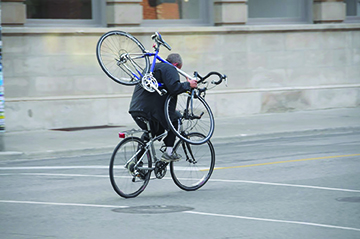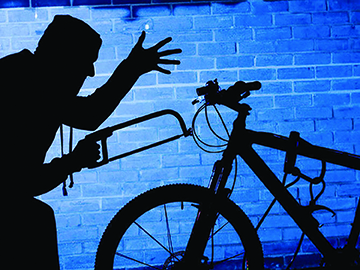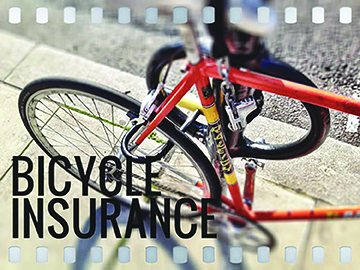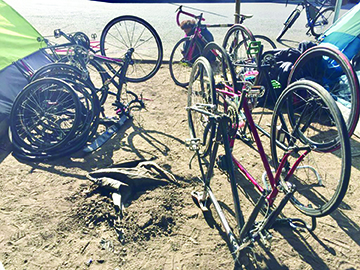“When I was a kid, I used to pray every night for a new bicycle. Then I realized that the Lord doesn’t work that way, so I stole one and asked him to forgive me.” — Emo Phillips

by Luke Schmaltz
Irony rolls up and down the streets of the Mile High City, as many unhoused inhabitants — unable or unwilling to pay the skyrocketing rent rates — somehow cruise about upon top-of-the-line, state-of-the-art, high-end triumphs of transportation.
Bicycles as well as their various parts and components are legal tender among some folks, and are traded, bartered, bought and sold with fervor — as each new morning presents a fresh batch of bikes to the curbside marketplace that were acquired the night before.

As Denver transplants from Silicon Valley and the Big Apple snuggle up and snooze in their posh Baker bungalows and overpriced Five Points rentals, enterprising prowlers from adjacent areas creep about and help themselves to the easy pickings of low-hanging, two-wheeled fruit.
Scenes Of The Crime
Backyards, side yards, garages, porches, storage rooms, carports and yes — the insides of residences — are not the only settings for theft. Bike racks on cars and in front of businesses as well as railings, parking meters, and street sign poles — any convenient construct upon which a bike can be locked — are pawed at daily as thieves apply various tactics for obtaining tires, chains, pedals, handlebars, seats and — many times — the whole dang thing.
An Accelerating Trend
Bicycle theft in Denver is on a record-setting pace in 2020. According to an article published by 5280.com, by October 5th there were over 3,200 reported thefts which almost eclipses the total amount of 3,283 reported in all of 2019. In late May of this year, Cycling Weekly reported their findings that insurers were seeing a near 50 percent rise in theft claims thus far, while industry professionals in the retail sector are scrambling to keep up with the buying demand. Many attribute the spike in bike sales to the pandemic lockdown, as boredom and the desire to get (or stay) fit drove people to cycling since gyms were closed down. This, in turn, feeds the theft rate as there are more bikes available, more homeless people needing transportation and most importantly — less consequence for petty crimes as law enforcement is being pressured to take a passive, inconsequential approach to low-level nonviolent crime.

The Lowest Of The Low
Not all people see bike theft as a “no big deal” situation, as many urban professionals ride to and from work every day — using their bike as either primary or sole means of transportation. For instance, Denver cyclist Jef Kopp rides from the Highlands district to his job at Little Black Church in Larimer Square every day. Having suffered several thefts across his decades as a cyclist, he attests: “Bicycle theft is not only a serious problem for those who depend on their bikes for transportation, it’s an act of violence. Stealing a bike might mean the bike’s owner misses a shift at work and subsequently loses a job. Or it might mean the loss of something sacred to a person like me, who not only rides bikes in a utilitarian way, but also finds a deeper connection to nature and spirituality.”
Who Is Responsible?
Meanwhile, the bike frames, handlebars, chains, pedals and tires are stacking up by the dozens — concentrated in chop shop-like setups along Logan St., in Capitol Hill, Santa Fe Ave. and various other ad-hoc dwellings that bear the unmistakable characteristics of homeless encampments. Some Denver residents have resorted to visiting these places to find their stolen property, such as downtown Denver newcomer Carter Haun, who — as reported by thedenver channel.com — who recently used a Facebook group called “Denver Stolen Bikes” to locate his prized, customized bike. He found it at the campsite on Logan and 13th streets and paid the person in possession of it $160 to get it back. Meanwhile, the blame game is swirling about — as homeless and their advocates are blaming bike owners for not sufficiently locking up their property, bike owners are blaming the police for not enforcing the law against theft, and cops are blaming the media for making them all look like murderers and neutralizing their ability to do their jobs.

Take Action
For now, it is up to bike owners to adopt a hypervigilant approach to protecting their property. In doing so, it is important to begin by understanding the various ways in which bike parts and entire bikes are stolen.
• Hands — flimsy locks and chains can simply be yanked apart by someone who is properly motivated.
• Hand tools — parts that are held onto the frame by hexagonal bolts can be quickly loosened with a pair of channel locks, pliers or a crescent wrench.
• Hacksaws — cheap and easy to use, these can cut through most cables and chains in a matter of minutes.
• Bolt cutters — not as cheap as a saw but many times faster to use, one snip and a padlock, chain or steel cable can be rendered useless.
• Pry bars — crude but effective, a few good yanks and your lock can be broken or the metal your bike is locked onto can be bent apart.
• Bottle jacks — requiring a bit more planning and finesse, this mechanism used to lift a car can be properly placed and extended to pry apart loosely arranged U-locks and chains.
• Portable grinders — a battery operated grinder, while noisy, can cut through steel in a matter of a couple of minutes.
Practice Prevention

Meanwhile, as a bicycle owner who cherishes and values your property, there are a few steps you can take to decrease the chances of a thief making off with your bike and increase your chances of recovery if it is stolen.
• Avoid flimsy locks altogether including thin chains and cables. Instead, invest in a super sturdy brand of U-lock and use two at a time to secure the front tire and frame as well as the back tire and frame to a bike rack, railing or otherwise permanent installment.
• Get the right brand — the best U-locks and other non-chain, non-cable applications with stellar reputations for being unbreakable are made by Kryptonite, Abus and Foldylock — among others.

• Buy insurance — depending on how much you paid for your bike, how much you use it and how much you love it — the premiums may be worth the peace of mind.
• Document — taking photos of yourself holding or sitting on your bike can help verify that you are the owner.
• Register — filing your bike’s serial number and other ownership-specific information with your local police precinct can also help recover the bike in the event it is stolen.
Ultimately, the only way to guarantee that your bike remains in your possession is to never let it out of your sight. As that is impossible for most — you can instead choose to go back to driving everywhere, lock the thing up like it’s made of pure gold, or simply go buy one for far below market price. All you have to do is pay a visit to one of Denver’s bustling “chop shops,” and you’ll be pedaling away on the cheap in no time.
